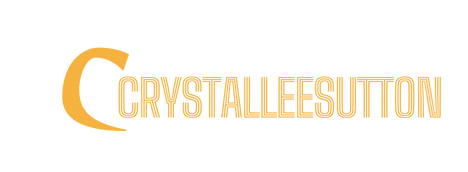What Strategies Are Most Effective for Urban Infill Real Estate Development?

In the ever-evolving world of real estate, urban infill remains a key strategy for city development. In essence, urban infill is a construction strategy that focuses on the development of vacant or underused land within existing urban areas. These spaces are rejuvenated by introducing new residential, commercial, or mixed-use properties. Given that urban infill development combats urban sprawl and promotes efficient land use, it is a strategy that continues to gain traction. But how can this development strategy be implemented effectively? Let’s delve into the most effective strategies for urban infill real estate development.
Uncovering the Potential of Underused Land
In urban infill development, identifying and unlocking the potential of underused land is the first and most critical step. It entails understanding the city’s landscape, spatial arrangement, and community needs.
Avez-vous vu cela : How to Develop a Comprehensive Tenant Retention Plan for Commercial Properties?
When you look around local communities, you might spot various types of underused land, including vacant lots, parking lots, or abandoned buildings. These spaces represent the untapped potential of the urban landscape, waiting for a transformative touch of development.
Through intensive research, you can identify the most appropriate projects for these lands. For example, a vacant lot in a densely populated residential area could be perfect for a new housing project, while an abandoned building in a bustling business district may be ideal for a mixed-use development.
Cela peut vous intéresser : What Approaches Can Be Taken to Market Real Estate Properties to International Students in the UK?
As you identify these areas, get to know the local community’s needs. Engage with local residents, business owners, and city officials to better understand what the community needs. This two-pronged approach to understanding the land and its surrounding community’s needs is a surefire strategy for successful urban infill development.
Incorporating Smart Growth Principles
Urban infill is not just about building in available spaces; it’s about improving communities and ensuring sustainable growth. To achieve this, incorporating smart growth principles into your urban infill project is essential.
Smart growth is a development approach that encourages a mix of building types and uses, diverse housing and transportation options, development within existing neighborhoods, and community engagement.
A cornerstone of smart growth is the promotion of mixed-use development. This involves combining residential, commercial, and sometimes industrial uses in a single project. Mixed-use developments are not only efficient in terms of land use, but they also create vibrant, diverse communities where people can live, work, and play.
Another key principle of smart growth is the integration of different housing types within the development. From single-family homes to apartments, providing diverse housing options will cater to a wide range of community members.
Maximizing Public-Private Partnerships
Urban infill projects often face numerous challenges, including land acquisition costs, infrastructure upgrades, and potential opposition from local residents. One of the most effective strategies to overcome these obstacles is to maximize public-private partnerships.
Public-private partnerships (PPPs) are agreements between government entities and private sector companies for the provision of public services or infrastructure. In the context of urban infill, PPPs can provide numerous benefits. For instance, they can help share the financial risk of the project and leverage private sector expertise in construction and design.
Moreover, PPPs often result in faster project completion due to the efficiency of the private sector. They also often lead to better project outcomes because they incorporate the knowledge and experience of both the public and private sectors.
Engaging the Community
Community engagement is another essential strategy in successful urban infill development. As the projects are within existing neighborhoods, the support and acceptance of local residents are crucial for the project’s success.
Engaging the community can come in various forms, from public meetings and workshops to online forums and surveys. It provides an avenue for you to share your project plans, gather feedback, and address any concerns or questions the community may have.
Community engagement is not just a one-time event – it should be a continuous process throughout the project. Regular communication and transparency can foster trust between you and the community, making them more likely to support the project.
Prioritizing Sustainability
In today’s world, sustainability is no longer an option—it’s a necessity. Prioritizing sustainability in urban infill projects not only benefits the environment, but it also contributes to the wellbeing of the community and adds value to the project.
Green construction practices like using sustainable building materials, recycling construction waste, and optimizing energy efficiency can significantly reduce the project’s environmental footprint. Moreover, sustainable design features such as green roofs, rainwater harvesting systems, and bike-friendly infrastructure can make the project more appealing to potential residents and tenants.
While sustainability might require some upfront investment, it often pays off in the long run. Sustainable buildings are more cost-effective to operate, more attractive to tenants, and more resilient to climate change impacts.
In conclusion, effective urban infill real estate development requires a multifaceted approach. It involves uncovering the potential of underused land, incorporating smart growth principles, maximizing public-private partnerships, engaging the community, and prioritizing sustainability. With these strategies, urban infill can contribute to creating vibrant, sustainable, and inclusive cities.
Leveraging Infill Housing for Affordable Living
Urban infill, when executed appropriately, can significantly contribute to the creation of affordable housing and thereby address one of the most pressing issues in urban areas. Infill housing involves the addition of new homes in built areas, often utilizing land that is currently vacant or underused.
In many cities, affordable housing is a scarce commodity. Rising land costs often prevent low and middle-income families from owning homes, pushing them to the outskirts and contributing to urban sprawl. However, infill housing can serve as a practical solution to this problem.
By developing in built areas, infill housing projects can take advantage of existing infrastructure, such as roads, utilities, and public services. This avoids the need for constructing new infrastructure and helps keep housing costs down. Moreover, the compact nature of infill development projects also encourages the efficient use of land, leading to more affordable housing units per acre than traditional suburban developments.
Finally, infill housing can also encourage mixed-income communities by offering a range of housing options. This includes low-rise apartments, townhouses, and single-family homes. Such mixed-income neighborhoods can enhance social inclusivity and stability, enriching the fabric of the urban community.
Harnessing Infill Projects for Urban Growth
Infill projects have a central role to play in driving urban growth. They not only transform underutilized spaces into vibrant, active areas but also add vitality and dynamism to the cityscape.
Infill development is particularly beneficial in revitalizing aging urban areas. By introducing new residential, commercial, and mixed developments, infill projects can attract new residents and businesses, boosting the local economy. Moreover, such projects can also improve the quality of the built environment and enhance the overall attractiveness of the city.
Additionally, infill projects can help cities grow in a more sustainable and efficient manner. Instead of expanding outwards and contributing to urban sprawl, cities can grow inward by developing vacant or underused urban spaces. Such a development strategy is not only environmentally friendly but also economically viable, as it often requires less investment in infrastructure than greenfield developments.
Finally, infill projects can also foster a sense of community and belonging. By facilitating more compact, walkable neighborhoods with a mix of uses, infill development can encourage social interaction and community ties.
Conclusion
Urban infill is a powerful tool for shaping the future of cities. As urban areas grapple with the challenges of population growth, housing affordability, and sustainable development, urban infill offers a compelling solution that reconciles these often conflicting objectives.
The strategies discussed in this article — uncovering the potential of underused land, incorporating smart growth principles, maximizing public-private partnerships, engaging the community, prioritizing sustainability, leveraging infill housing for affordable living, and harnessing infill projects for urban growth — all contribute to effective urban infill real estate development.
By adopting these strategies, city planners, developers, and local communities can turn underused urban areas into vibrant, inclusive, and sustainable neighborhoods. The process may be complex and requires careful planning and execution, but the rewards are immense. With these strategies, urban infill has the potential to breathe new life into our cities, making them more livable, sustainable, and enjoyable for all.
